 "/>
"/>
<span id="ukxiy"></span>
 "/>
"/>

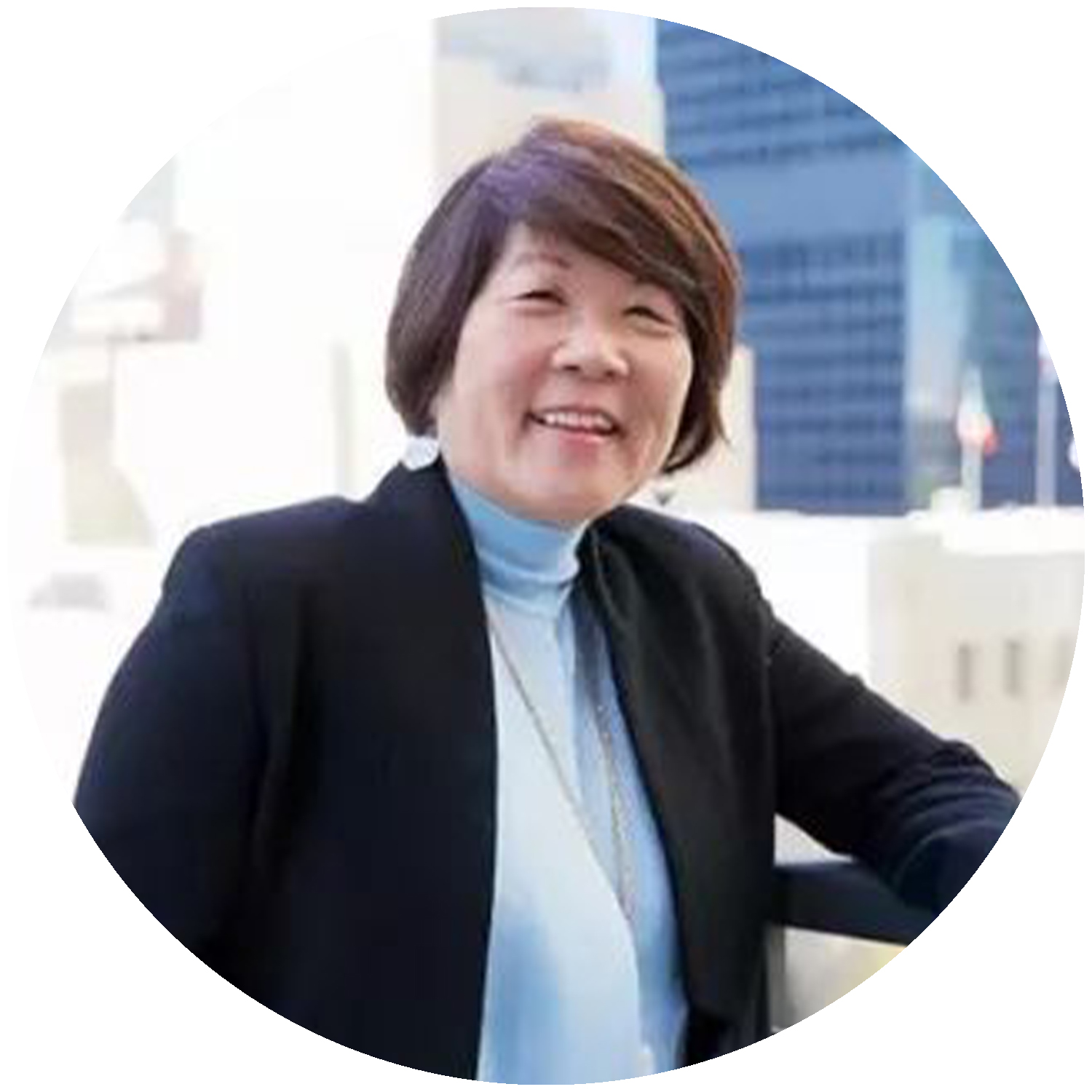
Jeri Oka
JERDE資深副總裁、 資深設計主創
Senior Vice President & Senior Design Principal
加州州立理工大學景觀建筑專業理學學士
B.Sc (Landscape Architecture)
California Polytechnic University
或許你未曾聽說過JERDE捷得,但你一定聽過或親臨感受過日本的難波公園、美國的環球影城、亦或是澳門的新濠天地、北京的藍色港灣……JERDE的項目遍布全球各地,至少10億人的生活中,出現過他們項目的身影。
11月4日至11月30日,JERDE在清華大學設計中心舉辦了名為“體驗不同”的專題展覽。當月20日JERDE資深副總裁兼資深設計主創Jeri Oka女士,為活動帶來“體驗式的未來”專題演講。
建道很榮幸作為特邀媒體,聆聽了本次專題演講,并對Jeri Oka女士、及JERDE中國區董事總經理、資深副總裁劉昶昇先生(Mark Liu)進行了深度訪談。
讓我們一起走入JERDE捷得,深入了解這一國際知名的城市規劃與建筑設計事務所。
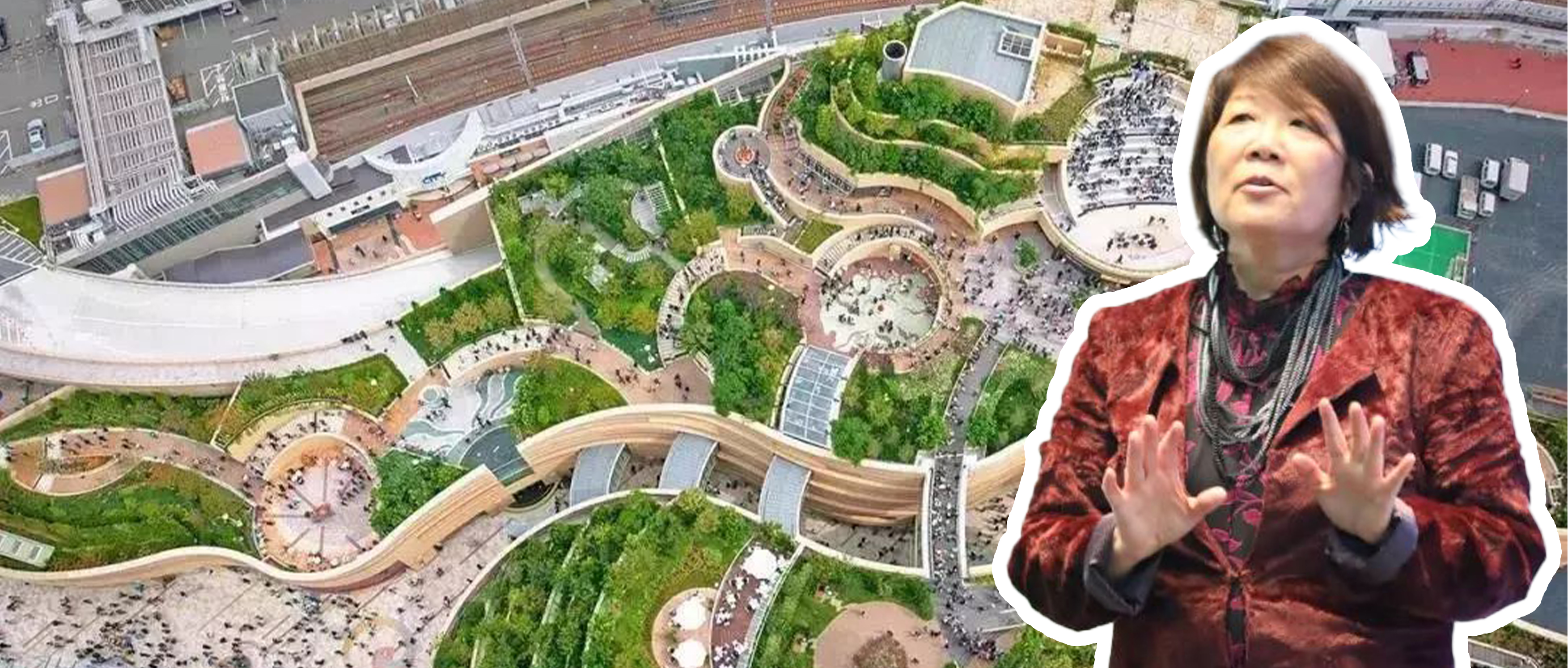
本期人物

Jeri Oka
JERDE資深副總裁、 資深設計主創
Senior Vice President & Senior Design Principal
加州州立理工大學景觀建筑專業理學學士
B.Sc (Landscape Architecture)
California Polytechnic University
Jeri作為公司主要設計負責人,在城市綜合體環境及空間設計方面,擁有豐富的經驗積累及創意想法。Jeri曾在EDAW(易道景觀設計公司)任設計總監,有近30年的景觀設計從業經驗。對于業態規劃及場所創造有獨到見解,在基地規劃和景觀設計方面擁有深厚經驗。善于將審美與實踐相結合并提出創新性設計方案。
主要負責:設計前期規劃、業態建議及定位板塊。代表作品:日本難波公園、澳門新濠天地、三亞海棠灣君悅酒店等。
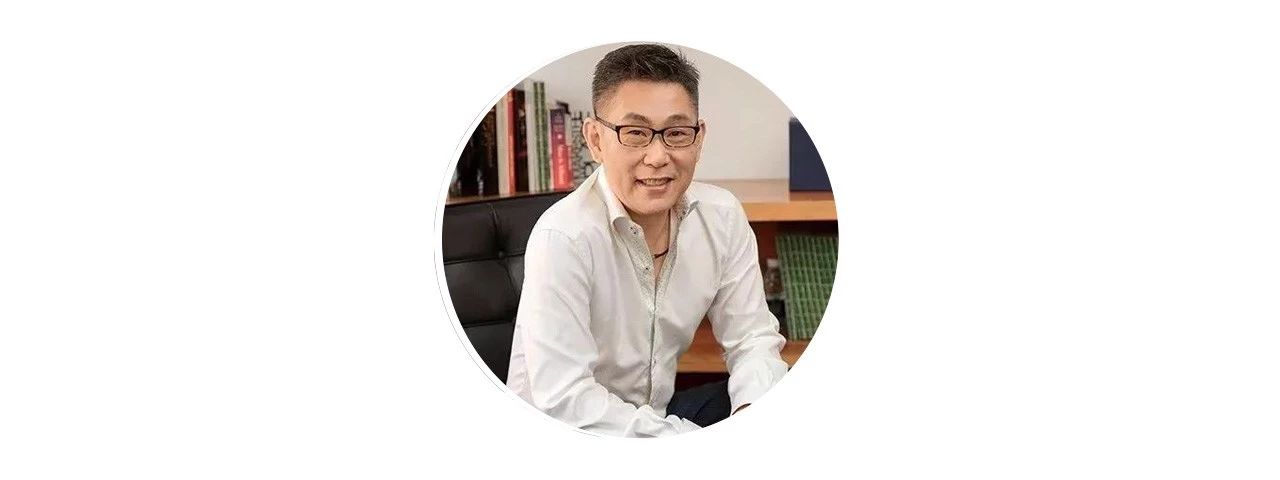
劉昶昇|Mark Liu
JERDE資深副總裁、中國區董事總經理
Sr. Vice President & Managing Director, China
伊利諾理工大學建筑學士
B.Arch Illinois Institute of Technology
關于 JERDE
作為國際知名的城市設計與建筑公司,JERDE總部位于美國加州——洛杉磯。公司匯聚了來自各國的優秀藝術家、建筑師、攝影師及創新性人才,項目管理辦公室遍布世界各地,中國就有兩處,分別位于香港和上海。
JERDE注重挖掘各地獨特文脈,以創造更好體驗為己任,項目類型涵蓋了住宅、酒店、商業綜合體、辦公、娛樂等眾多方面,經典代表作如難波公園、弗雷蒙特大街、百樂宮、太平洋城等。
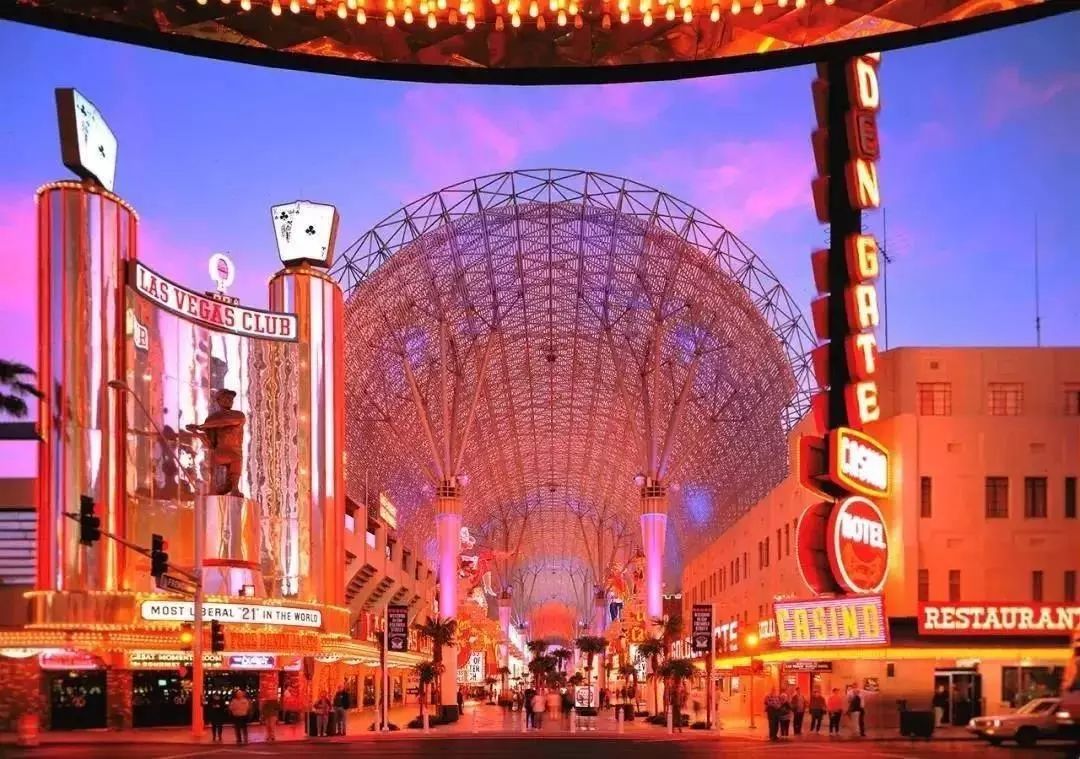

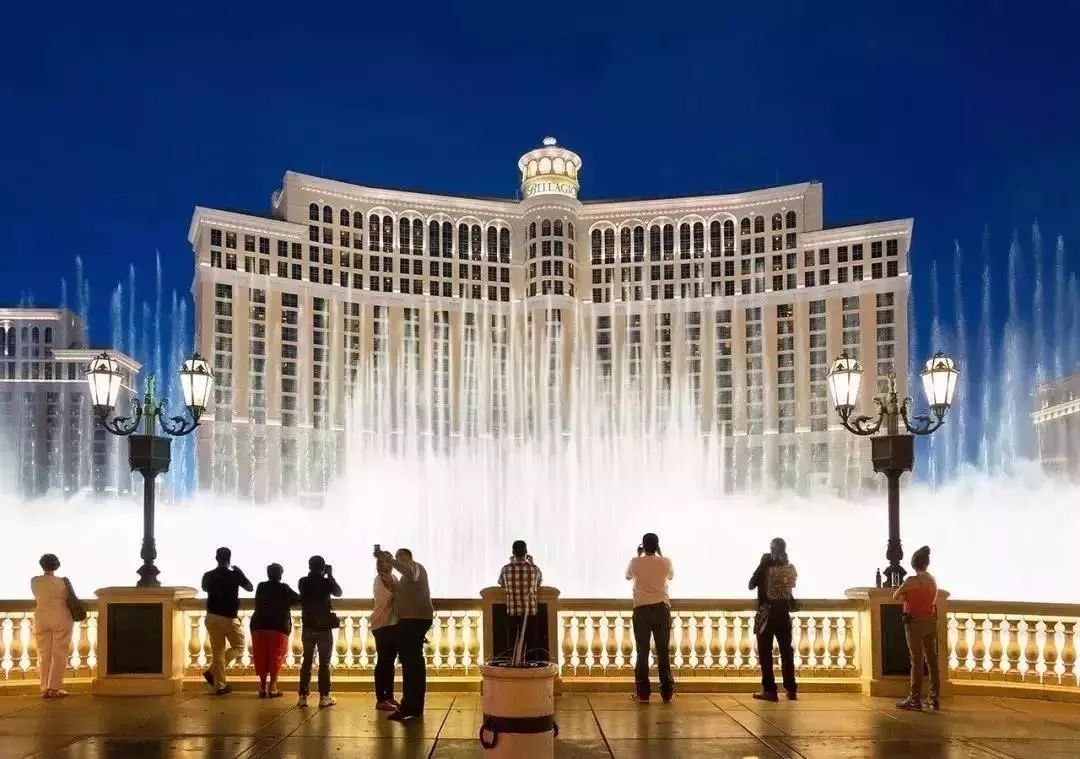
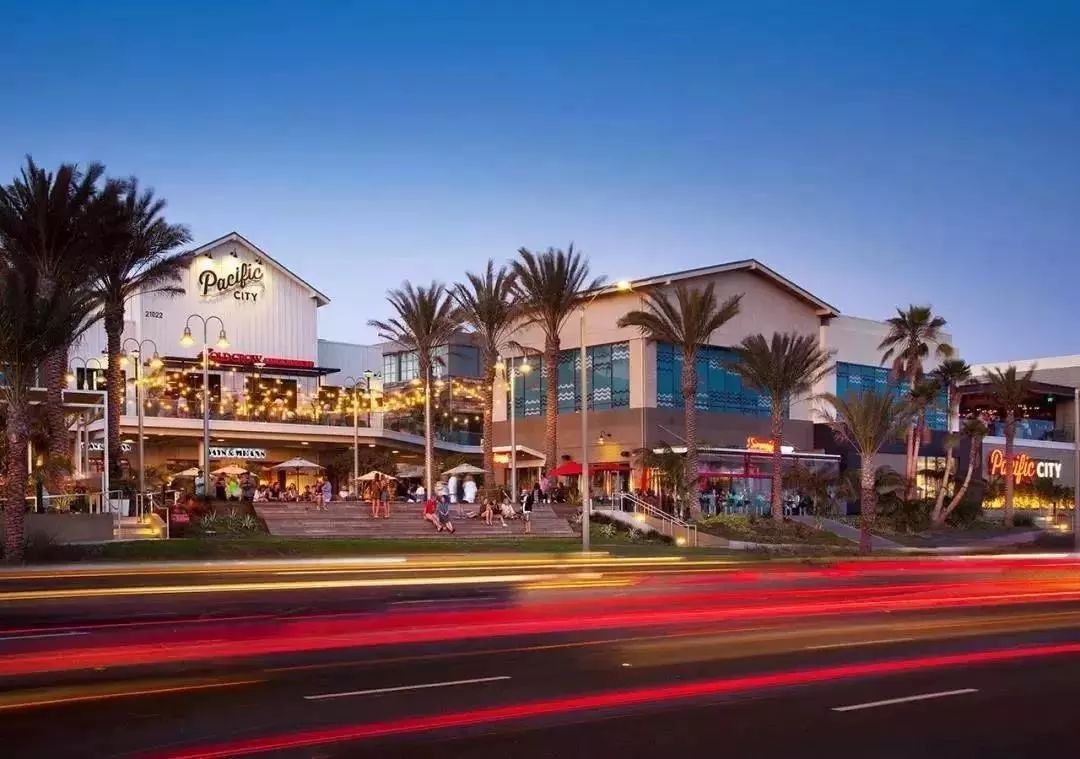
? JERDE
█ 作為JERDE的設計主創,您在大學讀書期間,印象最深刻的設計項目是什么?
Which design project impressed you the most when you were at California Polytechnic University?
Jeri:多年前的一個夏季,有這樣一個項目,令我至今印象深刻。將它形容為我景觀設計之路的“原點”并不為過。這個“原點”為我整個職業生涯奠定了一個思考基礎。
我在SWA實習期間,有幸參加了一個為期四周的研修活動。我們坐著大巴在加州各地參觀著名建筑項目。其中,藝術家野口勇(Isamu Noguchi)的California Scenario公園讓我眼前一亮。該項目受科斯塔梅沙市一個背景強大的家族所托,也是野口勇去世前創作的最后一批項目之一。
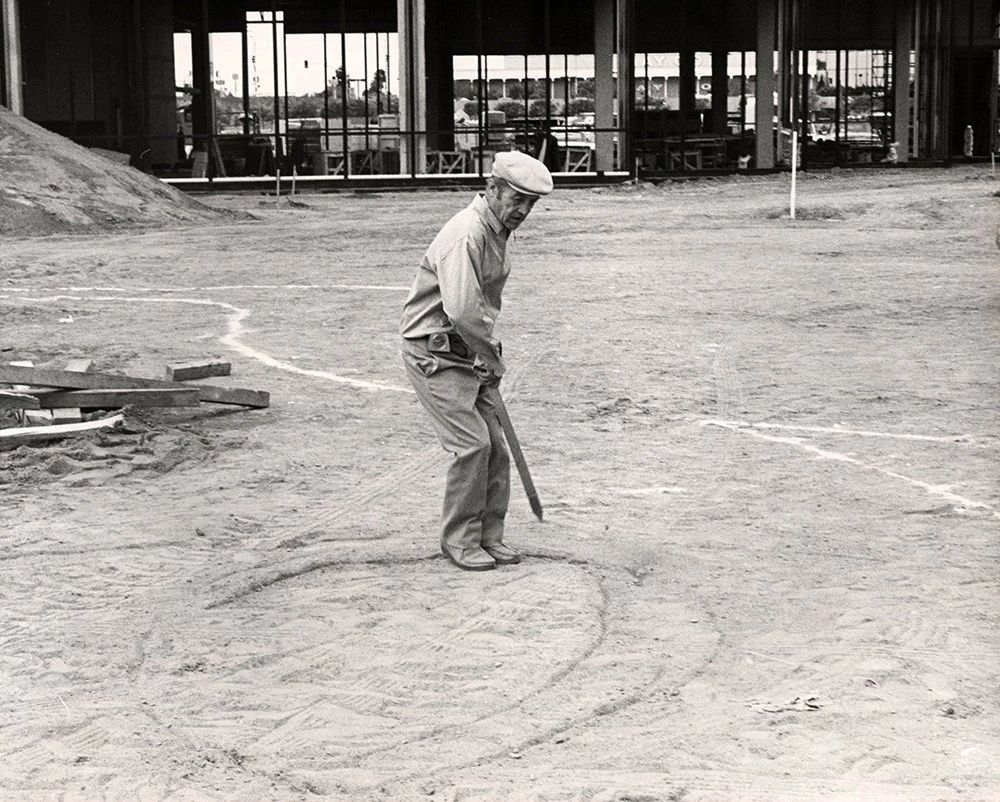
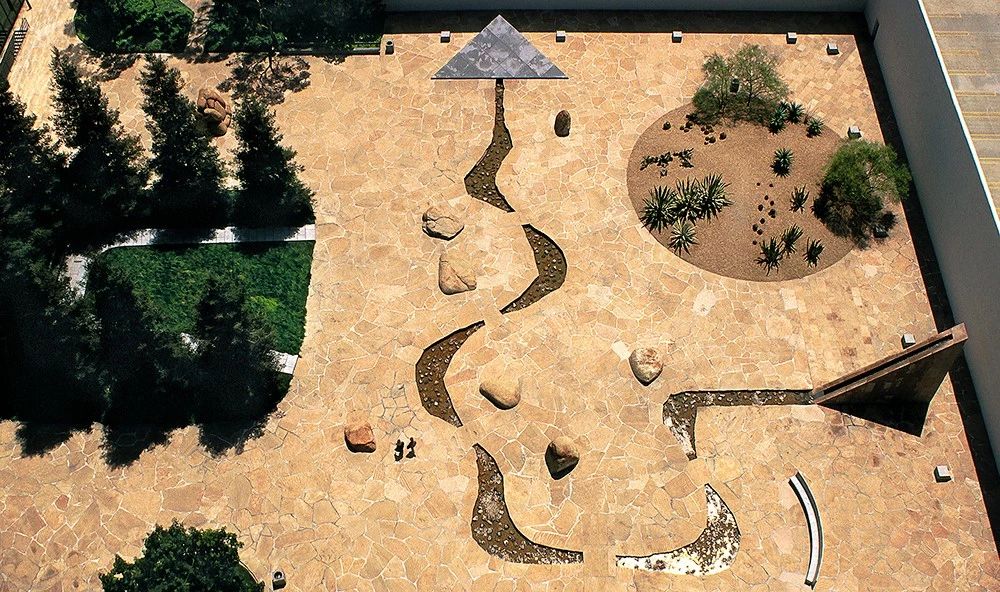
California Scenario公園 ? Internet
一片平坦的方形基地,在野口勇手下成為加州記憶衍生出的嶄新回游式庭園。該項目被大家稱為“加州劇本”,其最大亮點就在于它娓娓講述出當地的歷史文化起源。“利馬豆精神”雕塑、“能量噴泉”、“沙漠地”、“森林道”,皆成為探尋當地歷史的重要入口及象征。
野口勇了解到當地原來有許多日本農民以種植利馬豆為生,他真的就將利馬豆當做材料融入雕塑創作中。這個公園里的每一處景致、雕塑,都從其獨特角度體現了加州物語。
還有一點很有意思,該項目周圍的墻壁被漆成白色。配合日光及燈光的變換,營造出白天與夜晚完全不同的景致,極簡的手法卻營造出戲劇性的創新體驗。
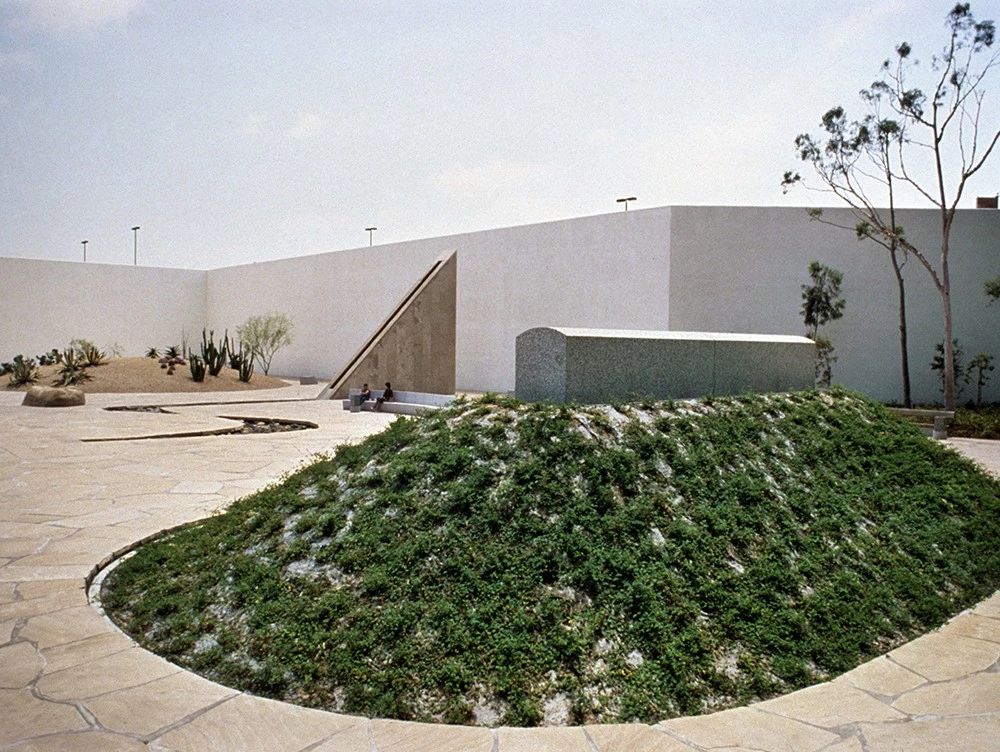
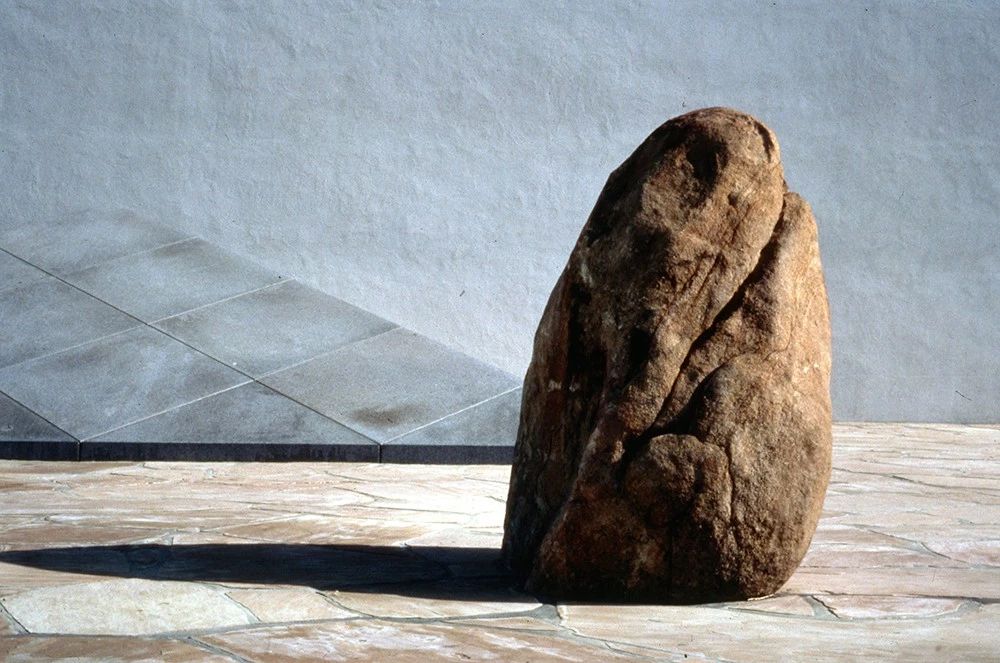
California Scenario公園 ? Internet
It was a long time ago, but there are a couple of projects that changed my thinking in design. One of the projects that impacted me the most was that kind of project that shaped my career in landscape architecture. I received an internship at SWA, one of the best firms at that time. It was a four-week summer program in Sausalito. I remembered that we took a bus all over California to see monumental projects as a retreat. What impressed me was the California Scenario, designed by Isamu Noguchi, a significant artist.
The garden was commissioned by the secret family in Costa Mesa and was considered as one of the last projects Isamu did before he passed away. California Scenario was interesting because it talked about a whole narrative regarding California. It focused on these various scenes within this medium-sized courtyard that spoke about the significant areas of California, such as Joshua tree, the aqueduct, or the lima beans where the project was located in. There were a lot of Japanese farmers in that area. They used to grow lima beans. So Isamu literally used lima beans to make a little sculpture, which is quite impressive. The sculpture talked about the ability to look at these various scenarios in speaking about a narrative. It gave you a bigger idea, what the California scenario is. Another fantastic piece was that he painted all the surrounding walls white and used lighting to create a different effect from daytime to nighttime. You can imagine, California scenario is a real experience of a theatrical quality in a sculptural nature but done in a minimalist way. So, I believe that the project is quite significant.
█ 野口勇的這個項目,對您現在的設計實踐產生了怎樣的影響?
How did Isamu's project impact your current design practice in JERDE?
從那以后,每當我拿到一個新項目,我都學會了將厚重理念、文史起源這些看似宏大的概念,包裹在細節里,并通過一個引人入勝的故事去展現其背后的抽象概念。這是野口勇“加州劇本”給我的最大啟發和影響。
野口勇作為一個雕塑家,能夠將雕塑與空間相結合,從三維視角去解讀空間,這恰是平面設計師不太具備的東西。 而JERDE則有著與野口勇相似的觀察空間的角度,我們力圖從多重層面、不同角度去看待建筑、景觀、空間,不斷開拓出創新之作。
Ever since then, when I worked on projects, I would like to speak about the bigger idea by telling a compelling story. As a sculptor, Isamu Noguchi looked at the space in three dimensions, and that's the difference between a flat artist and a sculptor, using the light quality to get around the whole object. This sort of virtue is we talk about JERDE, which has a similar design process.
█ JERDE在城市綜合體環境及空間設計方面有豐富創意,設計初期,這些創意來自哪里?
We can see many creative ideas in JERDE’s environment and space design of urban mixed-use development. Where did these ideas come from in the early stage of design?
Jeri:JERDE的創造力來源于方方面面,仿佛一個架構復雜、運作精良的存在。我總是認為,創造力取決于一個人看待問題、理解問題的方式,以及如何跳出常規思維去創新解決問題的能力。
創意的基礎是了解事實。我們接手項目,一定會詳細調研該項目所處地區的地域特色、歷史文貌,這些是我們手里可以依賴的歷史依據。我們從這些事實根據出發,細細梳理其關系,再進行排列、整合。
在創造的過程中,我們還必須牢記自己的身份——建筑及景觀設計師。因為我們的創造性工作不能異想天開,在尊重場地精神的同時,還得滿足客戶需求、城市社會發展需求等等。當所有需求和因素在我們手中結合,我們漸漸理出一條清晰的線索,得到一個業態混合的綜合體全貌。
所以說,JERDE的創造力以事實為基礎,以實踐和需求為導向。我們總是做足功課,走訪場地、掌握所有相關參數,創造力加上可持續性方向,讓我們走得更遠,作品更出色。
We don't believe JERDE's design principles just come from one source. The creative processes come up from all kinds of different pieces. It's almost a coalition of a lot of different pieces. The creativity comes from how you put when you understand the definition of the problem and how you solve that problem by using a creative manner.
With that in mind, since we believe in the authenticity of a project, the creative part comes from understanding the origin,which is what and where the project is,what is the history. After we did research, we could figure out how to choreograph and organize these together. Creativity is really important, because sometimes as an artist, you just do what you want. But in architectural practice,creativity is how to take all the different factors involved and understand who you're designing for. You also have to understand the parameters of the site and the needs of the client. When you put all these together, you could easily mix them up with various aspects. That's what we call the idea of mixology. The creativity comes from that.
At JERDE, we know we're making a project, but we don't know what we're really making quite yet until going through investigations and spending time on the site and working with the client. Visiting and understanding all the parameters help to get a real good feel about how we use our creativity in a certain direction and how to make it sustainable. Because you can be creative, and it can be a fun project, but that can't just sustain the whole longevity of a project by just having fun. You need to add a few fun sprinkles to an overall big idea.
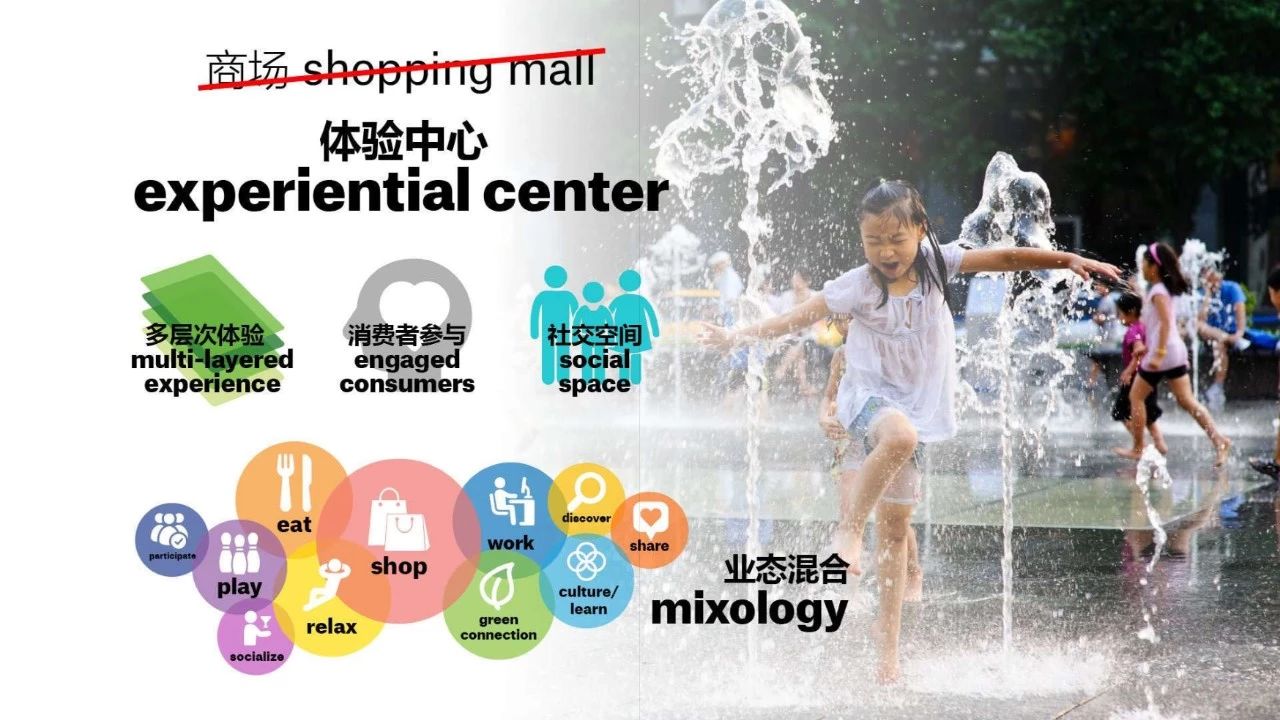
業態混合 ? JERDE
█ 在實際項目中,景觀設計有時處于建筑設計的附屬地位,在JERDE您是如何把景觀設計和建筑融為一體的?
In commercial projects, landscape design is often considered to belong to architecture design. So how do you connect architecture and landscape design when overseeing a project?
Jeri:這確實是JERDE有別于其他公司的優勢。不少人在看待建筑和景觀時,將它們分別對待。其實二者關系密切不可分割。試想,如果一個設計師只專注于建造一棟建筑,卻忽視了它與周邊空間和環境的互相影響,那這棟建筑會成為孤立的存在。事實上,建筑與景觀密不可分,設計師要從多維度進行思考,服務創作。
“連接性”是至關重要之處。我們梳理出項目相關信息,包括周邊環境、地域特色與個性,這些信息成為一個個“催化劑”,催化劑聚合在一起,產生火花,點亮整個項目,營造出更佳的體驗感,激發出更具創意的發展空間及城市復興的動力。
我們在調研項目時總是不斷突破自我,不斷拓寬邊界,直至我們獲取所有的相關信息才罷休。這也是一個JERDE設計師必須具備的素養和能力。我們向來注重可持續性發展,這一終極目標推動著我們創造“不朽”之作。
我們通過將作品帶入實地,汲取當地靈感,營造建筑景觀與周邊的充分互動,挖掘時間線上的前后聯系,不斷在時代前進的浪潮中屹立不倒。

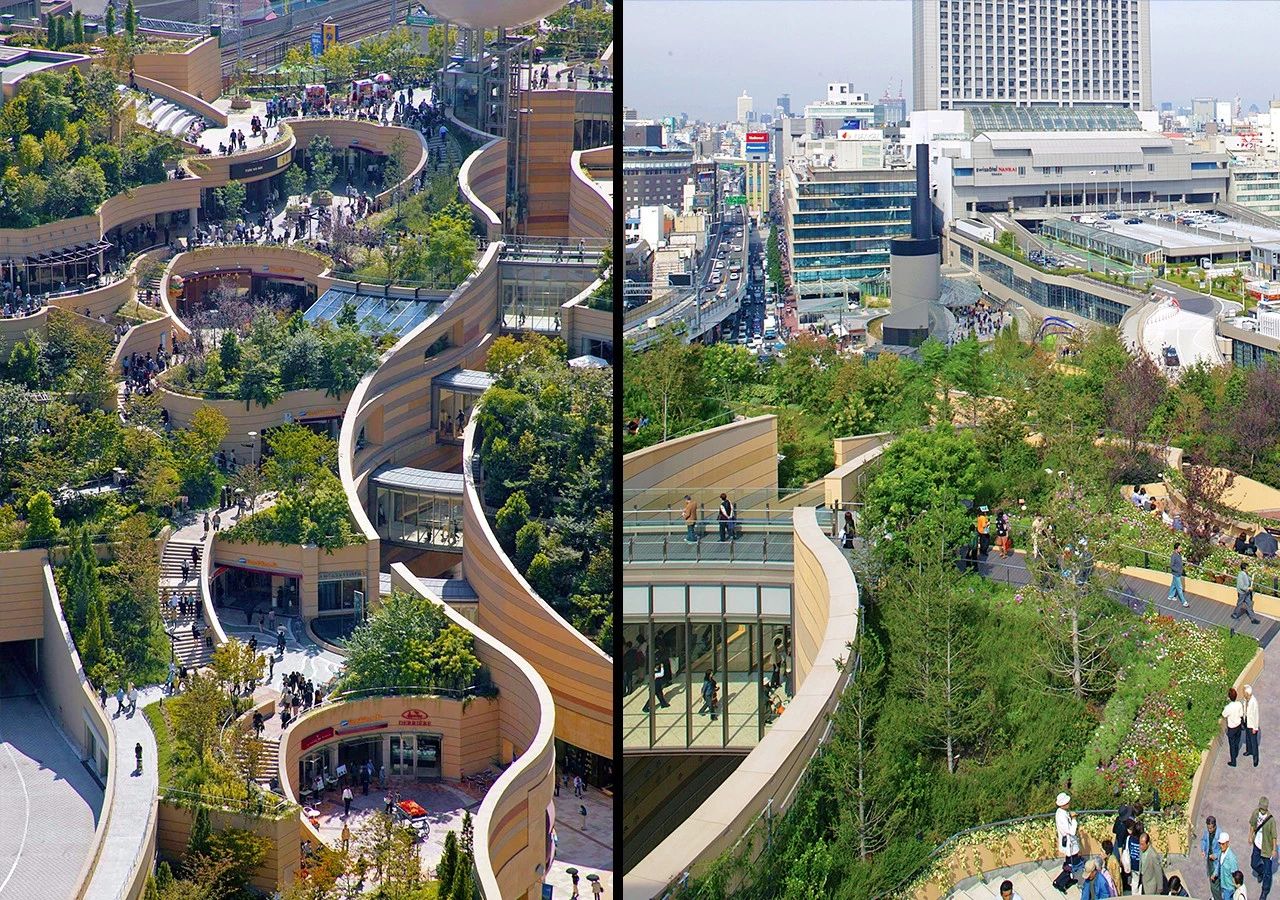
日本難波公園 ? JERDE
設計創作中,景觀、建筑、體驗感,總是通過使用者來進行傳遞和延續的。因此,關注“使用者”及其體驗感,在JERDE亦十分重要。始終從使用者角度出發,令JERDE輕松游走于建筑和景觀之間。
現今很多項目都是從景觀設計起源而來,如高線公園,它的出現改變了設計行業。將公共空間和很多相關要素相融合,成為了我們常說的“城市舞蹈”。很多想法就源于景觀設計的本源訓練。
That's the big difference between JERDE and other firms. Sometimes people separated architecture and landscape design, but they are inseparable. Because sometimes designers are so preoccupied with building the object without understanding how it is going to actually affect the surrounding neighborhood, how it's going to set up, and how it's going to interact with context. So, the two have to work closely together. As a designer, you need to run various tasks at the same time.
Most of the time, the idea that we are looking for is connectivity. The project is right there, but the significance of that piece of development is how it affects the surrounding area in every direction. And we call those catalytic projects. Connectivity is to create a catalytic effect and ignite the whole block that brings a bigger development in the overall region.
That is to say:when we look at our project and get to the boundary line, we cannot stop there. We have to look at its whole surroundings in order to come back. With landscape architecture training, that is very essential and basic. At JERDE, a lot of “timeless” comes from the idea of sustainability that we were doing for a long time. Now it has become a keyword. The ability to take its surroundings in a natural context or natural metaphor helps us to create more “timeless” sustainable projects.
Another important thing to us is that landscape architecture and the way we perceive space is through the orientation of the person, the people, and the users. That is a natural way of design in JERDE. So, it is easy to transit between landscape and architecture. Nowadays, most significant projects are being developed from the landscape base, such as the High Line. It revolutionizes the world and the way people work. The idea of integration of the public space is an “urban choreography” Lots of them coming from the training of landscape architects.
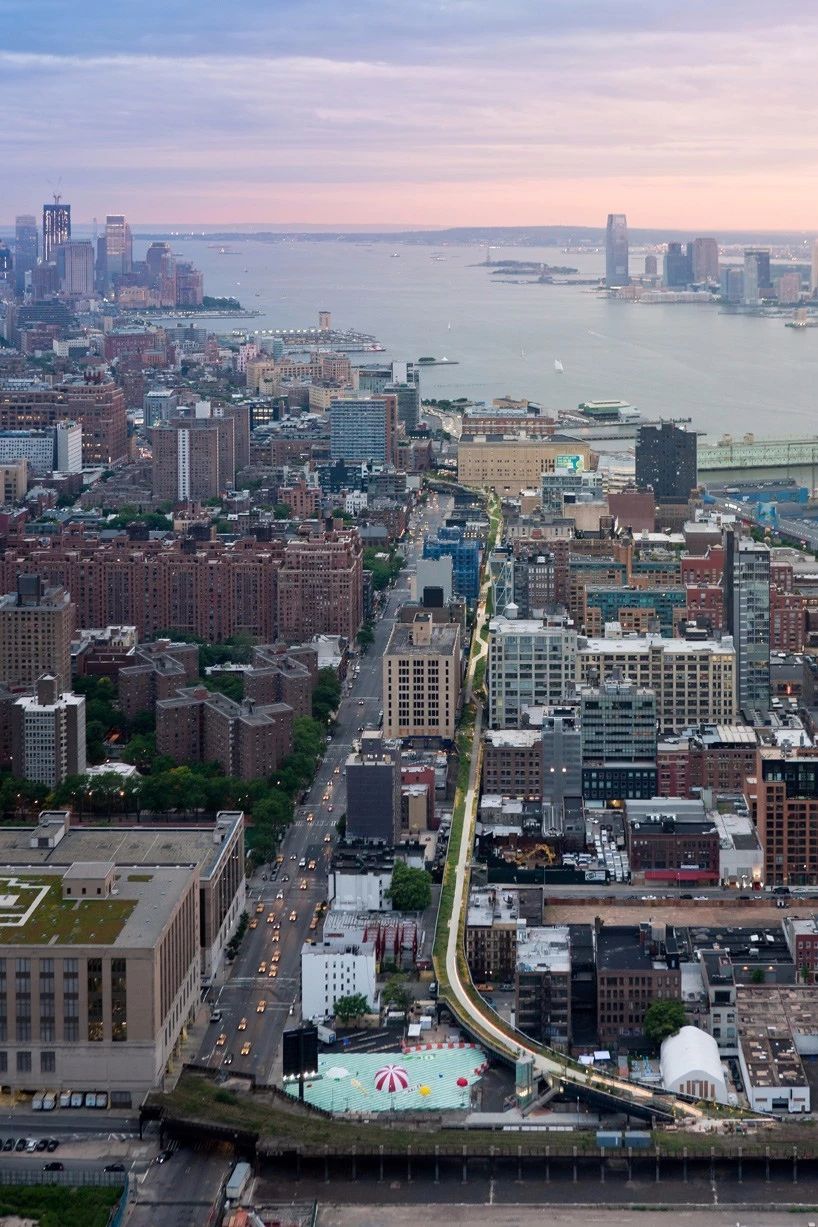
高線公園 ? Internet
█ 自然景觀與人工景觀如何很好的共處?JERDE的三亞海棠灣君悅這類項目,當度假性景觀插入到自然景觀中,自然景觀保護和開發的“度”,該如何掌握?
When developing a resort project in natural environment like Grand Hyatt Sanya Haitang Bay Resort & Spa,how do you master the balance between nature conservation and site development?
Jeri:這總是一個棘手問題。這類項目中,當你把一部分原始“綠色”拿走,替代進一些人為的景觀空間,一定要注意“平衡感”的把握。
在JERDE,我們總是將建筑景觀與自然結合來看待,力圖將其融為一體。而且我們總是盡可能地,保留或利用場所本身已有元素,融入作品,以此來體現地域精神和個性。
我們做的很多項目都是結構化的、多層的,我們創新性的做出了多種多樣的“立體層面”。例如,大家走在街道上可以看到的周邊綠地,我們希望將其引入垂直層面,在更立體的縱向線上,也創造出密度綠地。這一點也和亞洲地域特色有關,水平面上的發展有時會受到局限,因此我們往豎直方向開拓延伸,打造多樣化、不同高度的“水平層面”景觀,甚至包括屋頂。
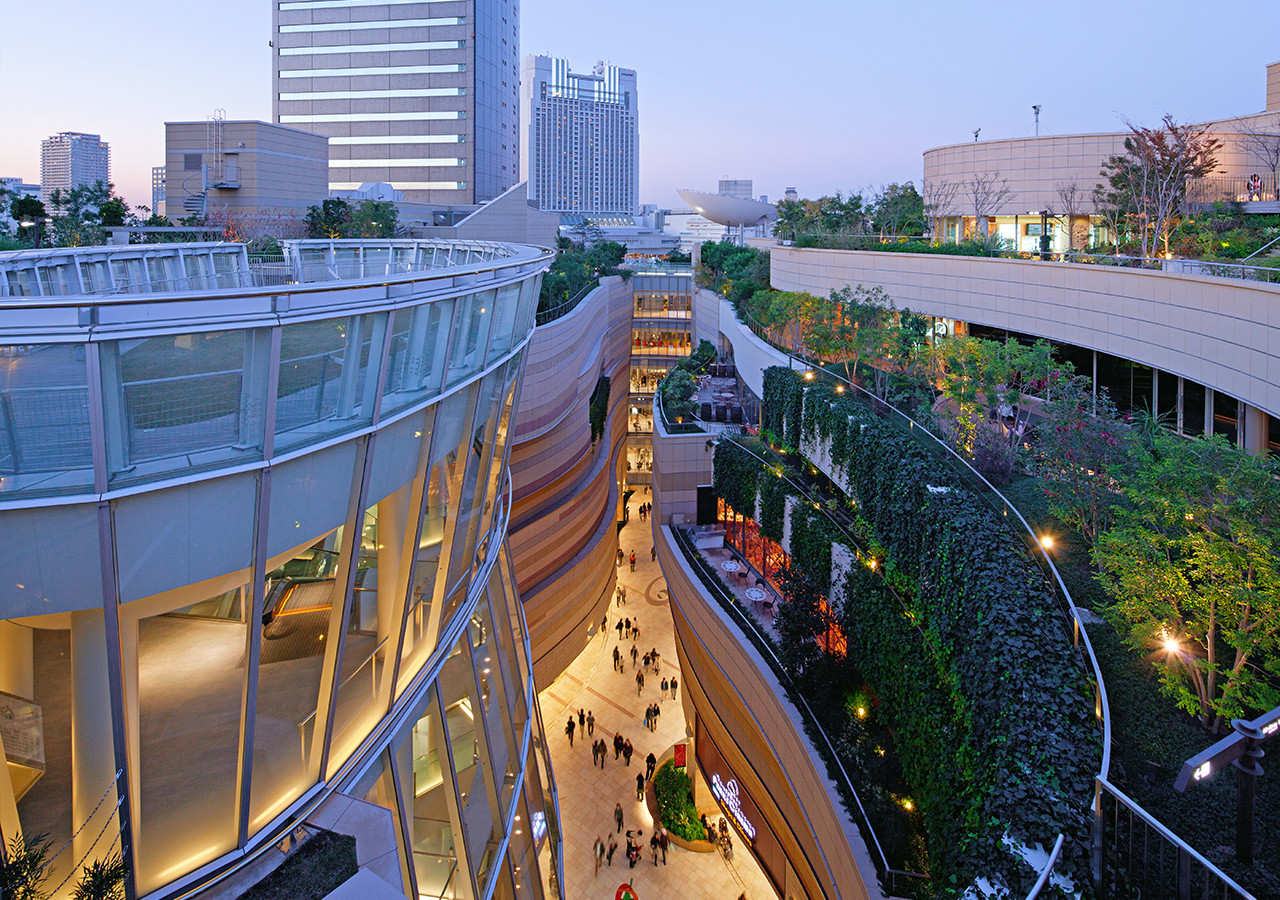
日本難波公園 ? JERDE
除此之外,我們還注重自然光的引入與運用。受亞洲氣候影響,空調成為項目中的必備品之一。但我們總是開拓性的尋找突破口,將自然風與光,帶入立體層面,制造新的驚喜。
也正是藉由自然光與風的引入,我們總是創造全新的綠化呈現方式。立體綠化不能止步于綠墻,在項目開始設計的時候,我們就很自然地加入了垂直層面種植綠樹的各類可能性與方法。
結構意識,總是讓設計師可以在第一時間,找出引入自然元素的重點區域。越早介入這一思考越好。一旦項目啟動,中途想加入垂直綠化,就會出現“牽一發而動全身”的尷尬。當我們意識到設計與自然相連接的重要性,就會及早在結構上做好預處理,以化解日后的困難。
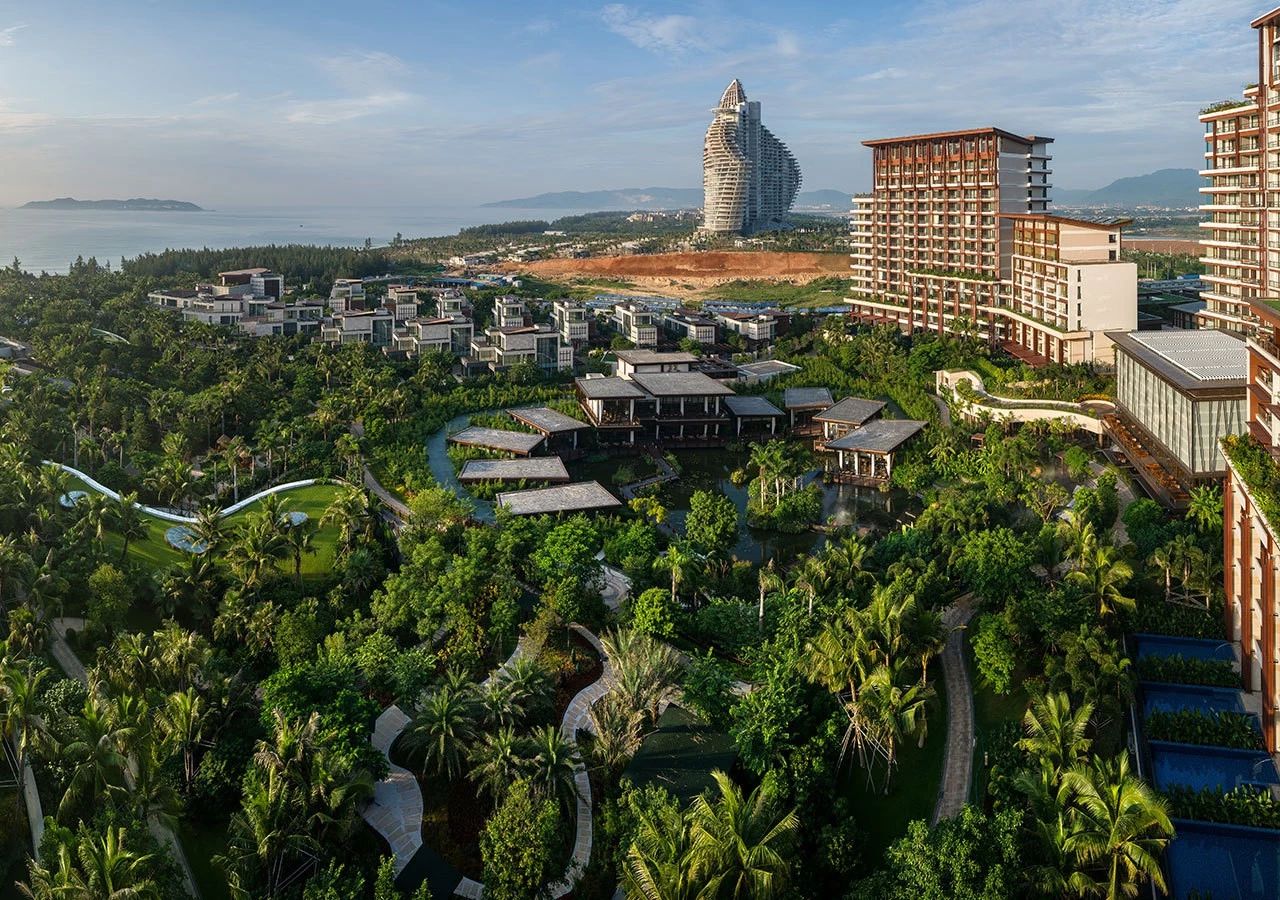
三亞的海棠灣君悅酒店 ? JERDE
That is always hard. When working on that kind of project, you have to take pristine green space away and replace it with manmade space. So, you need to balance manmade and nature. A lot of our projects have integration with nature. We look at it in a different way from the landscape perspective, so we try to figure out how to bring back some existing elements on-site, which provide the spiritual qualities. Our most projects are structured,and what we are creating is multiple various grounds. The natural ground that you walk on is considered as existing green. A concept at JERDE is vertical density. It is to create a feeling on the next level up. Because in Asia,you're limited to the horizontal, so you have to grow up to create “another ground” Then the space experience is mixed with the lower ground, the middle ground, the upper ground, or a roof. We also focus on natural light. Of course, in Asia, it's really hot and humid for some months. We have to use the air conditioning. But in other projects, we are able to introduce a breathable environment that allows us to plant on multiple grounds with different ways of greenery. With an open mind about greenery, there are so many new components we can use. It is not limited to vertical green walls. We need to bring a new way of planting at the beginning of a project. What we always do is figure out how we can work with the structure to quickly identify those significant areas that we can bring in nature in. It won't be a problem if you do it early on. When building projects vertically, it is hard to coordinate the structural conditions. At least for our firm, we realized the importance of the natural connection. We tried to work with the structure in that way.
█ 在城市綜合體等商業項目中,例如可口可樂園區、難波公園等,當設計師和開發商有不同意見時,要如何展開合作?
Many projects you’ve involved in are commercial projects, such as the Coca-Cola Park and Namba Park, etc. How do you cooperate with the developers when you have different opinions?
Jeri:與客戶進行良好溝通,一直都是設計師的挑戰之一。我們采取的方式是一起開研討會,充分溝通彼此用意,每個人都可以發表意見,彼此尊重。整個過程是愉快而活躍的,我們喜歡與客戶進行這樣的溝通和合作。
我們還會采取一種“團隊機制”以幫助溝通。客戶欣賞我們某位設計的才華與熱情,不代表他們會接受這個設計師的所有設計想法,因此,我們組建了團隊,進行集體溝通。集體溝通的好處在于,當一個人的想法不被接受,我們可以有另一位成員,從不同角度與客戶溝通,要么說服了客戶,要么可以了解到客戶不喜歡這個設計的真正原因。
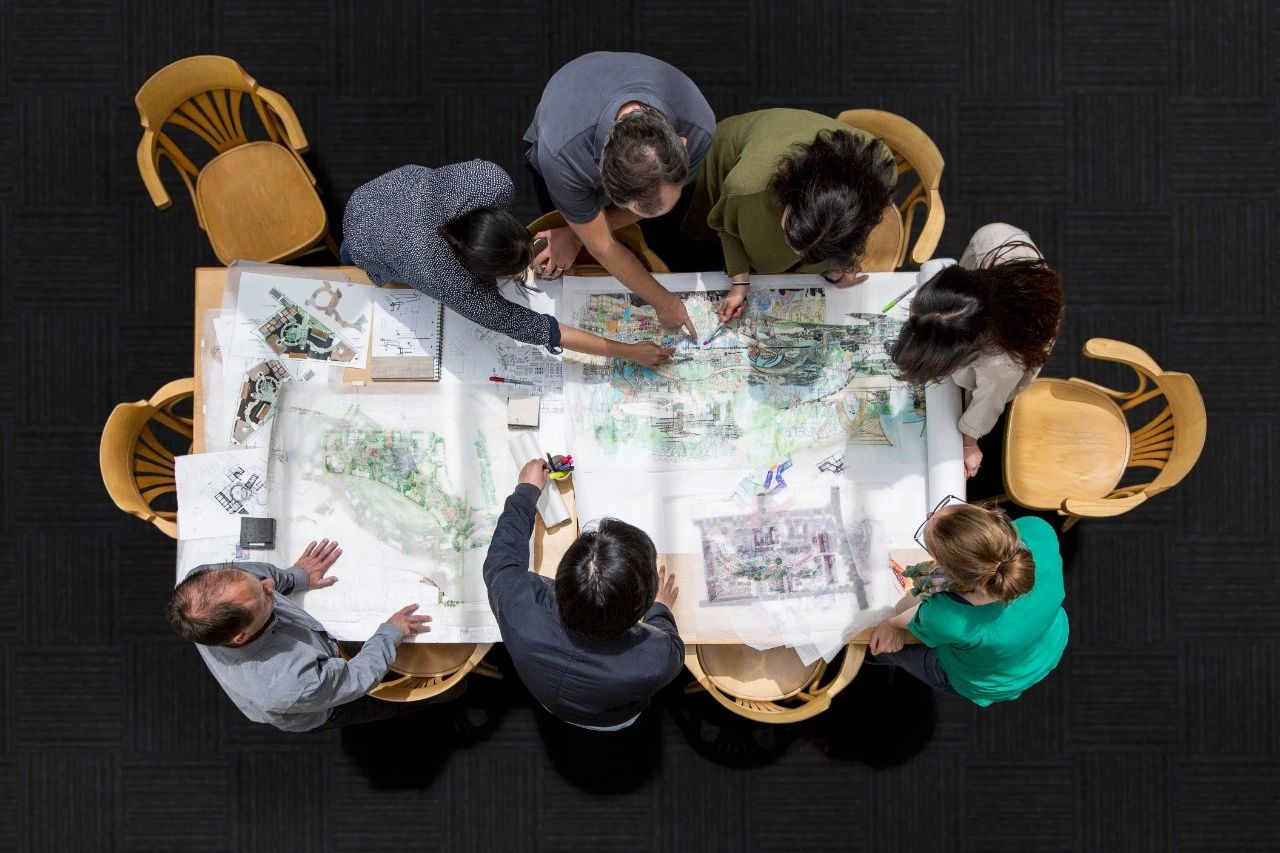
? JERDE
有時候,客戶無法開門見山、直截了當地說出創意被否掉的原因。有可能來自于他們的直覺,也可能有其它的他們需要權衡的因素在里面。因此,我們總是積極引導客戶說出自己的真正想法。在研討會上,以充分互動的方式,來探尋背后原因與真相。因此,研討會對于公司來說是很重要的一個渠道,讓大家有機會接觸到項目甲方決策者,進行彼此對話和交流。
The challenge of handling the client is a part of our profession. At the beginning of projects, we have workshops with the client. Everybody can take an equal seat on the table during the workshop. It is a very engaging process. We always like the way to work closely with the client. They can compare different ideas. We ask them to invite anybody from their organization, and their opinions will influence the design. We utilize that to have a dialogue with the decision-makers.
Sometimes clients feel uncomfortable, and we have all kinds of people on our team to help communication. That's why we have a team. Sometimes clients really appreciate our enthusiasm, but they may not like your idea. You need to have someone in the team to convince them and have the client explain why they don't like it. So, the first thing is to understand why. We don't want to be defensive, but we want to truly understand the reason.
Sometimes clients cannot honestly tell you they don't like it because they think it will hurt your feelings. Or they're dealing with other parameters, or they have other ideas, but they never discussed it. We were so enthusiastic about this idea that they can explain it. A lot of that is true, then questioning them why they can interact and have a design relationship. So, the workshop makes us have to build a dialogue with the decision-makers.
█ 您從事了近30年的景觀設計,做了很多國際項目,您認為中國目前的景觀發展處于什么階段?
You have been engaged in landscape design for more than 30 years and have done many international projects. How do you think about China's current landscape development?
Jeri:我們參與中國項目已有很長時間了。我記得第一來北京做項目,是1996年之前了。對于我們跨入這一市場的早期項目,當時合作的顧問,其觀念還沒有與世界行業發展完全對接。但這些年的情況完全不同了,行業發展與國際接軌,許多國外的優秀從業者亦選擇回國參與建設。加上互聯網的幫助,中國當前景觀水平及認知與國際差距并不大。
在中國,尤其是在北京,人們對環境的注重,對室內室外概念的認知在日益加強。北京四季變換,特色鮮明,這是一座可持續性發展的城市,有污染,美國也有。城市化的進程中,污染是其附屬品,所有建筑的建造過程也會帶來一定程度的污染,但這不意味著我們束手無策,我們應該積極地通過各種方法去緩解這一局面。我很欣喜地看到中國的很多項目,都更多地在將自然與建筑景觀相融合。
“城市化”并不意味著世界需要令人稱奇的各類出挑建筑,它更多的是需要大家意識到建筑與自然結合而產生的可持續的重要性。我相信亞洲所有國家,也包括中國在內,越來越理解TOD(以公共交通為導向的開發)的重要。
TOD不是簡單地讓我們從一處移動去另一處的效率提高,真正精髓在于其本身可以成為城市公共客廳,起到集樞紐、社交、互動于一體的綜合存在。我希望各地包括美國也能持續推動此方面,不斷革新。中國當前已經開始因地制宜,不斷結合實際情況制定發展方案,這是非常好的現象。

城市環境 ? Internet
Our involvement with China has been a long time. We first worked in Beijing before 1996. We remembered that interviewing consultants was kind of behind the times, but now it is different, it seems Chinese education has improved. A lot of people who have been abroad had come back to China. And because Internet technology is accessible, there is not much gap between China and the current international landscape level. No matter which country you are in, people can keep pace with times and learn more information online.
To my understanding, the people in Beijing have continuously emphasized the design of both indoor and outdoor spaces. Beijing has distinct seasonal changes and the ability to integrate various factors, which makes people feel that it is a sustainable city. I understand that there is pollution, but that the pollution aspect must be no different than the US. Urbanization did result in pollution. That's what people face. Buildings that occupy an essential place in the world also produce pollution during the construction process. However, some measures can be taken to alleviate this situation. I appreciate that there are a lot of Chinese periodicals that produce the ability to integrate more of nature's role with the built environment.
Urbanization doesn't necessarily mean that you make all these amazing looking objects as an architect. It means the integration of the sustainable nature of that. I do think that Asian cities really understand the significance of TOD (a transit-oriented design project). TOD means people will have multiple benefits, rather than get from one place to another. It can also become a real hub or a living room for a city. I think that's an excellent thing here in China and wish that even the United States should look at that more. It is a good phenomenon that China can make development plans according to the problems it faces.

TOD ? JERDE
█ 可否給景觀和設計專業學生及青年設計師一些建議?Can you offer some advice for landscape architecture students and young designers?
Mark:我的小學和中學是在香港的英制學校完成,之后去美國伊利諾伊州理工大學讀建筑。縱觀我的受教育歷程,我發覺亞洲、歐洲、美國的教育方法不盡相同。亞洲的教育方式以功課、背書為主,對于自由提問不夠注重。英式教育以嚴格著稱,開放度還是不及美國。到了美國的大學,我深切體會到美國教育方法是在刺激人的想象力,試圖讓每個人回到童年時對事事都問個為什么的狀態。
From primary school to high school, I studied in a British school in Hong Kong. After that, I went to the Illinois Institute of Technology to study architecture. After I went there, I felt that education methods in Asia, Europe, and the United States are different. The basic education method in Asia is to do homework and endorsement. In short, don't ask, just do it. The British education I received in middle school was not as open as the United States, and it was still a bit strict. At the university, I discovered that the American education method is to stimulate your imagination and bring you back to the age when you often asked why.
Jeri:是的,對于亞洲學生來說,我特別希望大家能勇于表達自己的意見并善于提出質疑。可能目前受教育傳統影響,對學生教育的開發程度不夠,但要努力擺脫刻板學習方式,激發自身創造力。
你不是復制粘貼的機器,要有一雙善于發現新鮮事物的眼睛,讓興趣點激發自己無窮的創造能力。我相信質疑本身,就是為了探究真相,提出疑問的同時,就是在開發和利用自己的思考能力,要不斷去強化這一方面。
與此同時,要相信自己有能力不斷挑戰自我,人的潛力是無窮的,不要止步于現狀,要去開拓,去創造。因此,不妨從自由表達自己的意見和想法開始。
For the students in Asia, they should be able to express themselves and come up with questions. Although education for students sometimes is not open enough due to the system, I still hope that everyone can be creative, instead of just cramming. You are not a copying machine, you can see many new things, or you will be interested in something, so you can be creative. I believe that questioning is about finding facts. If you question what you're doing, and you know you're using your mind to think. You should reinforce this kind of free-thinking.
You have to believe your ability to challenge yourself, that what you do may not be enough. Each of us has incredible power. So you have to be free to express your ideas.
Mark:我想,中國學生出國留學,應該注重吸收當地文化,把英文學好,盡可能多地與當地人交流。文憑只是一個方面,深入了解所在國家的深厚歷史文化也很重要。我們從事建筑行業,藝術、文化、哲學、歷史,都是我們需要了解的方面。
因為我們的職業,不是一紙設計的平面存在,這背后蘊含的功底與積淀,需要用時間、知識、經驗、閱歷去造就。也許不少偉大的建筑師在人生的50歲階段才迎來成就,就是因為他們把前面的時間都用來做鋪墊了。所以在學校打好扎實基礎的同時,也要意識到,后面的路,還很長,不斷學習創新是關鍵。
Chinese students studying abroad should absorb local culture, learn English as well, and communicate with local students as much as possible. Don't just get a diploma without understanding the culture. Because as architects, we must not only understand science, but also art, culture, philosophy, history, and so on. This profession is too complicated. It is not an endorsement but an accumulation of personal experience, experience ,and knowledge. So many great architects did not start to achieve until the age of 50, because they had been laying the groundwork for the first 30 years. When you study in school, it is just basic skills, and there is still a long way to learn.
訪談 / 文案|Sara Li, Spring Sui
翻譯|Lynn You
校對|Yiwei Huang,Sherry Li
編輯|Winnie
審核編輯|Yibo
版權?建道筑格ArchiDogs,轉載請聯系media@archidogs.com
若有涉及任何版權問題,請聯系media@archidogs.com,我們將盡快妥善處理。

